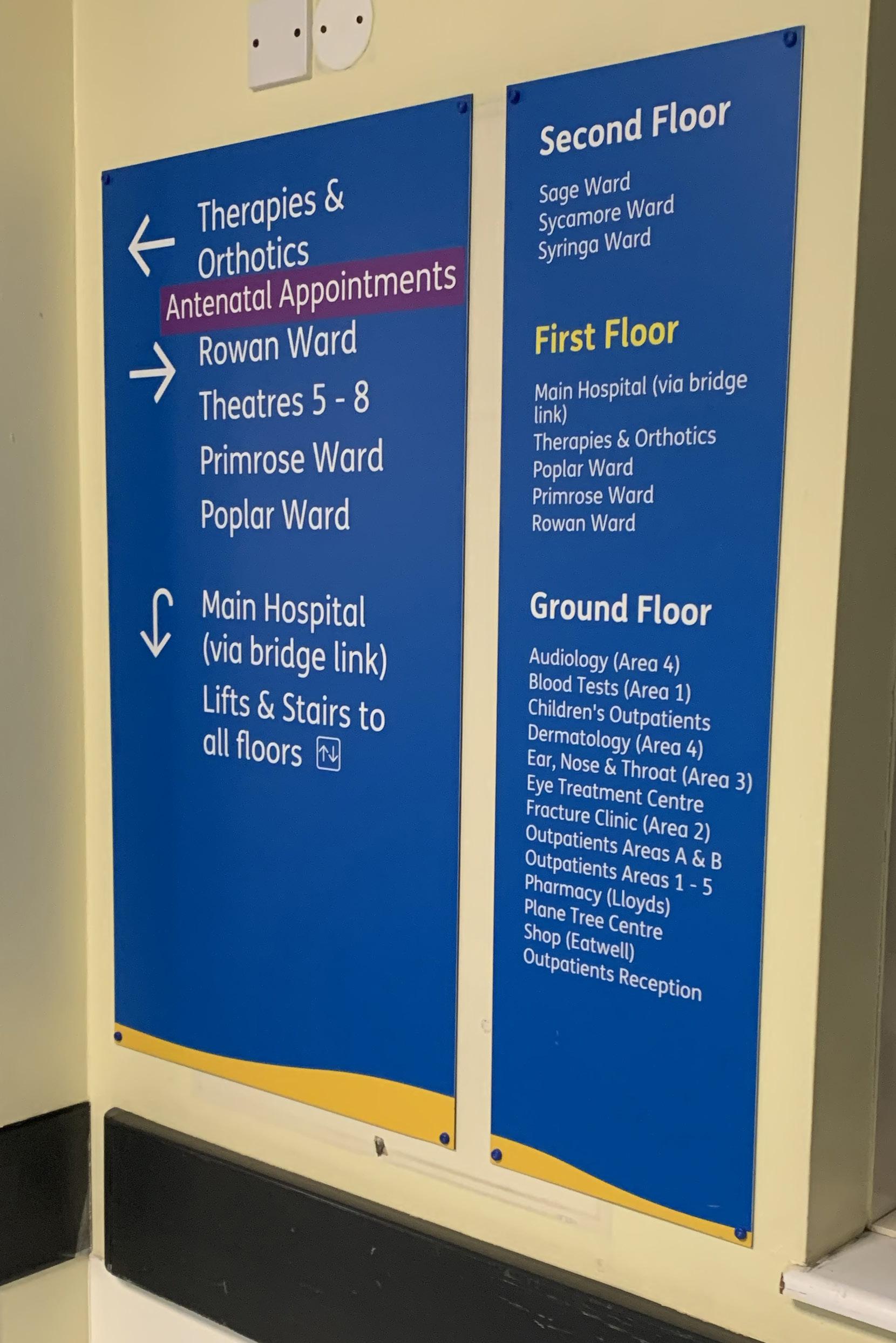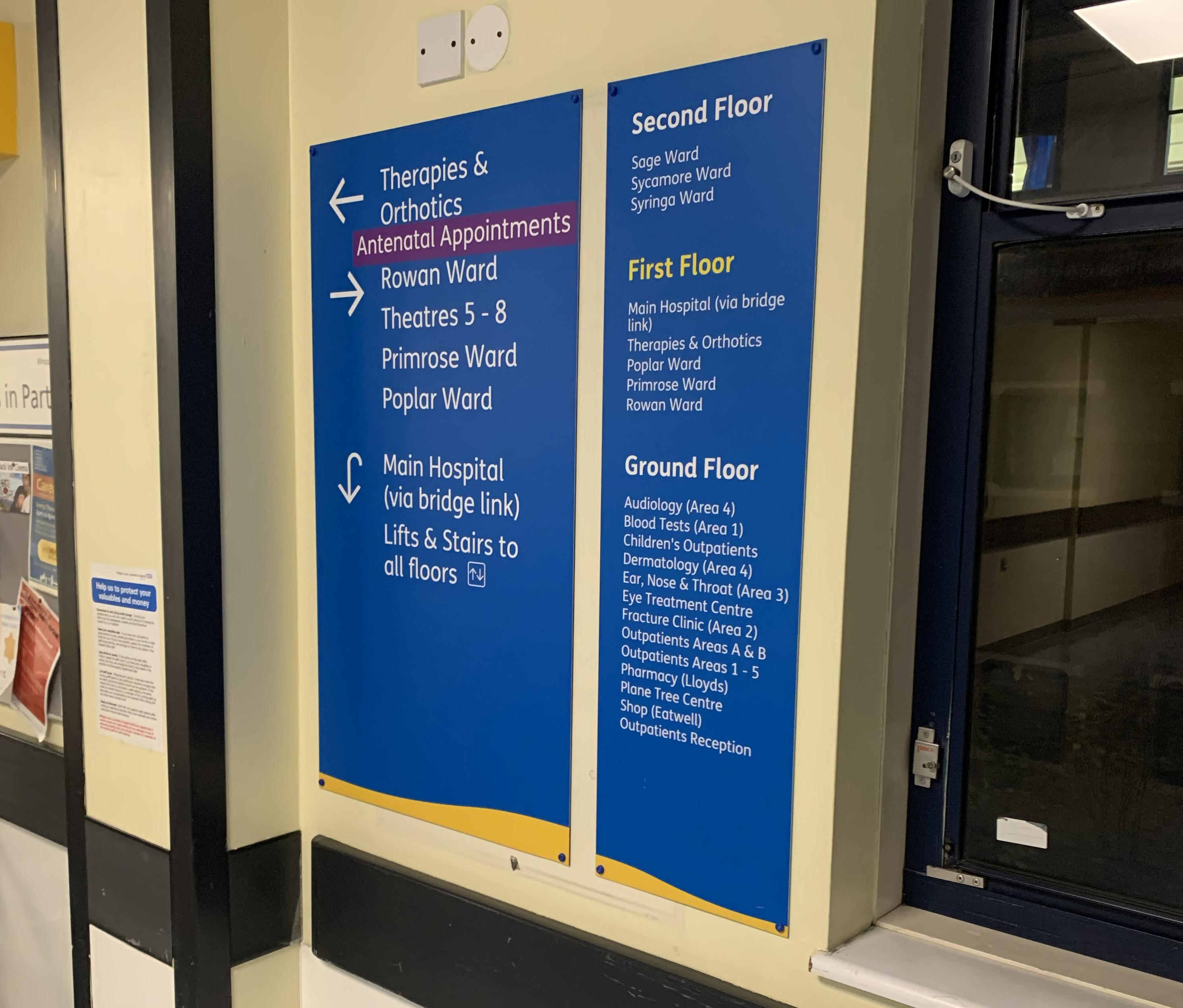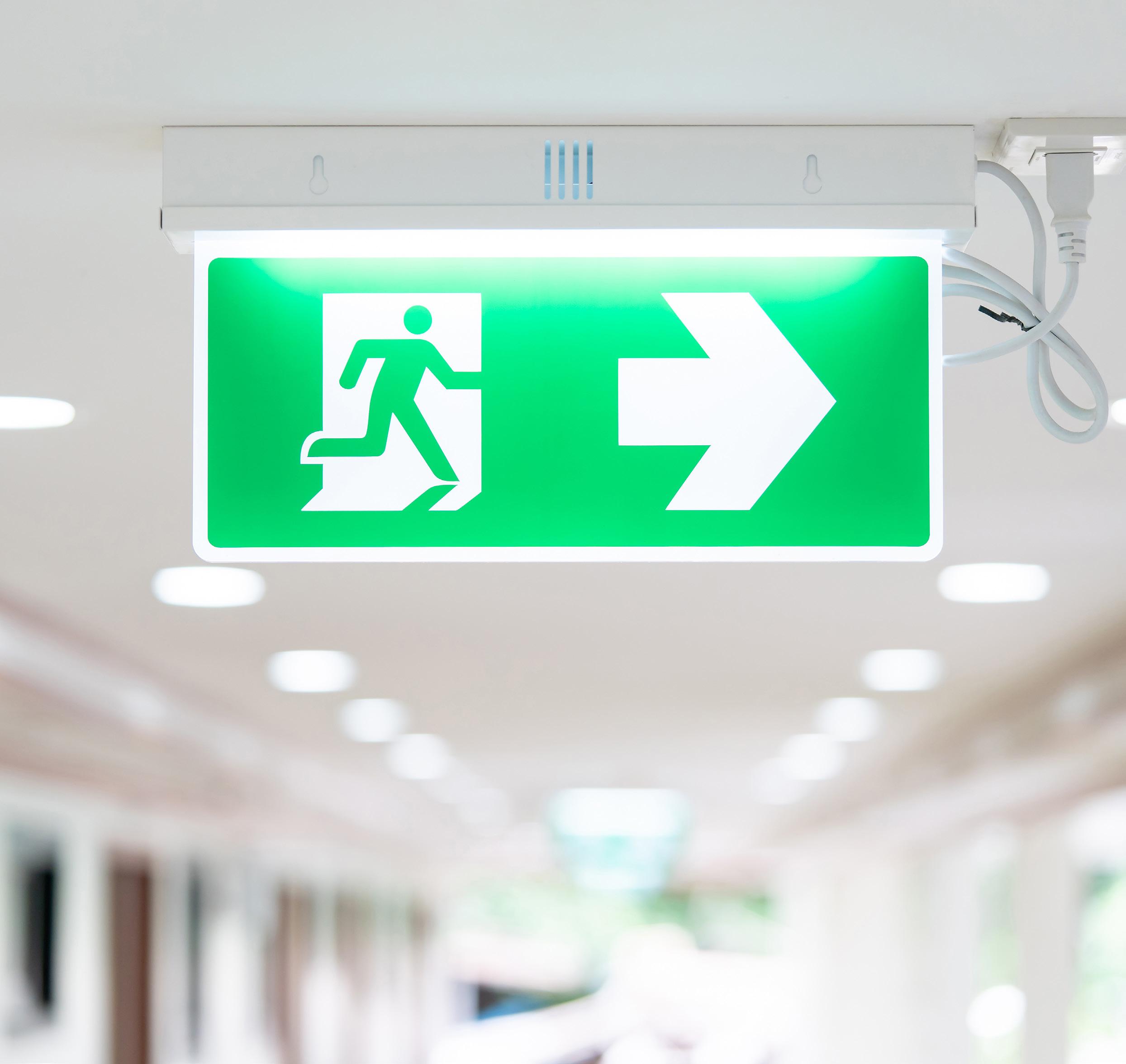
8 minute read
Facilities Management
from Health Business 22.6
by PSI Media
A good sign
Signage can bring real benefit to your organisation and it is a very cost-efficient way to do so. HB looks at the benefits of good signage
There are many different types of sign that your organisation may need: external to highlight where you are located, wayfinding signs to direct people to where they need to be, health and safety information, fire exits etc.
First impressions Signage is one of the first things people see when they visit your organisation. It is important for your signs to be clear, as this gives a good impression of your organisation. Clear and concise signage makes your organisation look trustworthy and legitimate, whereas misleading or unclear signage can be confusing and produce a negative impression. As the saying goes, you never get a second chance to make a first impression and good signage shows you care about your staff and visitors.
Visitor experience Signs make it easy for people to visit. Clear and concise signage makes the visitor experience easier. In the health service, visitors from the general public maybe be unfamiliar or, depending on the nature of your organisation, already uncomfortable visiting your office or location and a good sign can help reduce some of this stress. If the signs are easy to follow, visitors will feel more relaxed. If you are already stressed, difficulty navigating an unfamiliar building is not helpful.
Signs are important for the smooth running of an organisation – if people know where to go, they are unlikely to go the wrong way, stand in the wrong queue, cause crowding in a lobby or need to ask for help. Signs can also help people get the help they need more quickly, once they are where they need to be – signs near a queue or in a waiting room can provide people with the information of what they need when it is their turn to be seen – for example if they need photo ID or an appointment letter. Of course, signs are designed to be helpful, so don’t provide too many. Think about what information a visitor would need and where the best place to display it would be. It is important not to overload your visitors. E

It is important not to provide too many signs, but it is also important not to provide too much information on your signs, as visitors need to be able to pick out what they need to know quickly. Don’t put any information that isn’t necessary on your signs.

Advertising Signage helps in advertising, if visitors and service users know where you are located ahead of their needs, this can help them should they ever need to visit. Depending on the nature of your organisation, signs that display your services can bring potential users towards you ahead of a competitor.
Good signage with a recognisable brand can differentiate you from the competition. Branding is important as it shows what you are about. Pay attention to your branding including logo, font size and style and colour. To provide information, generally, the simpler the better. There’s no point using a fancy font you think looks good, if it is not easy to read.
The signs you use must be appropriate for your audience as well, don’t use small fonts in areas frequented by elderly visitors and don’t use complicated language where children are.
Be alert to the colours you are using – for example, we know that
a yellow sign is warning us to be careful or watch out for a hazard.
Consistency is also important, to provide a seamless experience to your visitors and avoid confusion. It also creates a uniform idea, that visitors will come to recognise.
Health and Safety Signage isn’t just about advertising, it is also important to keep people safe. It is crucial to indicate fire exits and safety equipment to keep staff and visitors safe and provide assistance in an emergency.
Signage should always be part of health and safety strategies, and can protect against accidents like trips or falls. As well as keeping people safe, it can protect against lawsuits in the event an accident should happen.
Signage relating to health and safety should be more prominent and clear than any other signage you have on display.
Health and safety signage for example on fire escapes or Covid can reassure staff and visitors that their safety is taken seriously.
A safety sign should be up-to-date and compliant with regulations (for example fire exits signs should be green with white text). As with any signs, they should be clear and readable and in a good state of repair.
Cost One of the major benefits of signage is that it is a cost-effective and long-term way to achieve all of the above. Once a sign is installed, it is yours to keep, requires no maintenance and lasts a long time. Particularly from an advertising and health and safety perspective, signage is one of the most cost-effective things you can do.
Overall, good signage provides a better experience for staff and visitors and is a very simple and cost-efficient way to do this. L
How we can help optimise healthcare
With deficit levels at their highest in NHS history, now more than ever, hospitals must strike the right balance between managing costs and efficiencies while providing a high level of patient care. Healthcare authorities are under a lot of pressure to achieve cost savings and recognise their responsibility in delivering excellent patient care and the impact of its activities on the social, economic and environmental well-being of the local communities
This is where Veolia comes in. Unlike any other sector such as manufacturing, healthcare is unique as its focus and purpose is based on people, not products. It is the backbone of our country. As the population is ageing and the demands of NHS trusts are changing, ensuring patients get the services they need from hospitals is more crucial than ever. We specialise in helping hospitals run big, complex, and energy-hungry facilities enabling the NHS to become more sustainable, helping to focus budgets on patient care-enhancing facilities and directly improving healthcare.
How could a partnership with Veolia benefit your trust? A partnership that prioritises patient care. Veolia provides secure on-site energy, Facilities Management (FM) and waste services to over 230 UK hospitals. By implementing site-wide decarbonisation strategies, we are at the forefront of delivering significant cost and carbon reductions using proven energy-efficient technology, and best practice optimisation, supported by a whole building approach. We currently provide energy services for over 100 hospitals that support the care of patients across 43,000 UK hospital beds. These supply the energy requirements for around 8.1 million inpatients each year and increase the sustainability of the healthcare sector by saving over 120,000 tonnes of CO₂ emissions annually. Unlock your potential - What solutions can Veolia offer? For hospitals, ensuring that services are running efficiently and that equipment is well-maintained are key priorities. When patients’ lives and well-being are at stake, the security and stability of their surroundings are crucial. With tight budgets to adhere to, and other pressures in the form of an ageing population and workforce. Veolia’s FM team offers a full range of core services such as; cleaning, fabric maintenance, and electrical engineering. However, we know that hospital requirements often go beyond the typical boundaries of what many would consider FM. Managing supplies of medical gas, installing ramps or fire doors, and even installing hand sanitiser stations. These are all examples of the type of extra work our FM team undertakes.
This agile approach ensures that hospitals can keep functioning efficiently, even in the face of unexpected circumstances - for example, during the pandemic we responded quickly to a hospital’s urgent requirement for more oxygen. With engineering support from Veolia’s IFM team, we ensured a reliable oxygen supply at bedsides and there were no disruptions to the vital services the hospital provides. For hospitals under pressure to continuously provide high standards of customer care, knowing that equipment and critical assets are being maintained to the same high level of compliance delivers much-needed peace of mind. With around £5 billion of backlog maintenance in the NHS currently, we can help sites carry out necessary improvements, and support them to be more sustainable. With hospitals gradually moving towards a ‘smart hospital’ model, we can help you give patients a better experience by creating more modern, user-friendly facilities.
Can you give us some examples of the work you have done? By inspiring partnerships across the UK, Veolia is now at the forefront of innovation and delivering the circular economy. The real demonstration of what we can achieve lies in the results we deliver to our customers, and how we can help them to become more resource-efficient, more sustainable, and save money. From helping Rotherham NHS Foundation Trust save money and cut carbon emissions, to enhancing biodiversity at the Broadgreen Hospital Community Garden in Liverpool providing a space for hospital staff, patients, along with members of the local community, to find a moment of peace and enjoy the outdoors. These are just a few great examples of how we can help our customers take the lead and show how we can cut emissions to help mitigate climate change and preserve precious resources for future generations.
Explore our bespoke, immersive and interactive VR experienceashowcasing the impactful work we do at Veolia: http://app.1stepnorth.com/iheem/
How Veolia can help you achieve Net Zero With the NHS responsible for 25 per cent of public sector emissions in England, the healthcare sector needs to act now to meet net zero targets. We can work with trusts to assess the existing infrastructure of hospitals, and can then make suggestions for optimising equipment. We can identify the projects that will work with your hospital, and design and build the right solutions that will help you meet your net zero goals. By continuously improving solutions for ecological transformation, additional resources can be identified and recovered for hospitals across the UK. L
FURTHER INFORMATION










